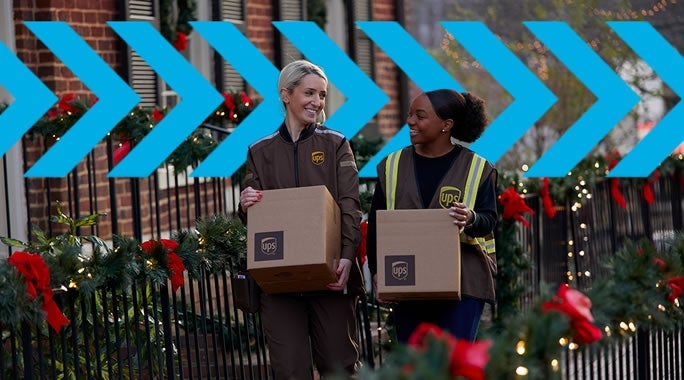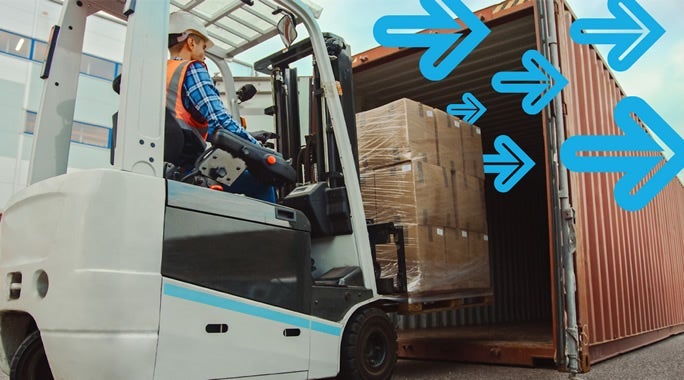BLOG POST
Cold Weather Shipping Tips

Reading Time: 3 minutes
Over the winter, temperature drops and road conditions put some shipments on thin ice. Staying above freezing temperatures (32°F) preserves product integrity for some goods, while others must stay within strict thermal ranges. Pharmaceuticals, perishable goods and groceries, paint, cosmetics, sanitizers, cosmetics and glue are a few examples of products that require temperature management throughout the supply chain. But upholding thermals is only part of the equation. Slick roads can slow trucks or divert routes - creating unpredictable logistics that jeopardize delivery windows and are particularly problematic for temperature-sensitive shipments.
To help with perishable shipping solutions and winterproofing operations overall, we put together cold-weather shipping tips, best practices and considerations so you can stay on track despite the icy trails ahead.
Considerations for Temperature-Controlled Shipping
You can't predict the weather, but you can plan for it. Because winter shipping comes with several logistics challenges, you'll need to find the sweet spot for booking trucks and preparing shipments. While planning, consider the following shipping tips to keep your FTL and LTL freight on the move no matter the weather:
- Schedule strategically. Booking carriers a few weeks or months in advance is risky, as weather conditions may alter delivery dates or hub arrivals. Monitor availability and confirm your trucks a few days before the ship date to align deliveries with more dependable forecasts.
- Watch the weather. Looking outside your window is a start, but don't forget to check your destination's weather before scheduling deliveries.
- Add extra time into deliveries. Choose shorter routes when possible. And be aware that slick conditions, road closures and overturned vehicles could pop up any time. Pad arrival times, especially if big storms loom on the horizon.
- Build a backup plan. Don't admit defeat if a truck is stuck on the road. Talk to your carrier or 3PL partner about a failsafe. It's far better to be prepared than deal with product losses and a damaged reputation.
- Budget conservatively. Consider whether you need Protect from Freeze or deeper temperature-control shipping services upfront. Also, factor mileage costs in case a carrier needs to take an alternate route.
There are a lot of moving pieces for cold shipping - your schedule can change at the drop of a snowflake. Talk to your carriers to feel out realistic delivery windows, and consider working with a third-party logistics (3PL) partner for extra eyes and expertise to get you through the season.
Package Temperature-Sensitive Shipments With Extra Care
Packaging requires the same attention to detail as building your cold shipping strategy. Just like parents throwing an extra scarf around their kids, it's important to properly insulate packages before letting them out the door. There is no shortage of materials to choose from: polyurethane or expanded polystyrene foam, thermal bubble wrap, vacuum-insulated panels, phase change material and more.
These materials insulate, block humidity or moisture and protect shipments from dings, but they have their strengths and weaknesses. Choosing the right packaging materials comes down to the mode of transport (truck, rail, air or intermodal), transit time and compliance standards for your shipment. Know the regulatory requirements and work with your 3PL partner and carriers to make sure inventory is properly packed while conforming to the required freight dimensions.
Pick Reliable Shipping Carriers With Proper Package Protection
Along with truck availability, cold shipping services should be a top factor when choosing carriers. The easiest way to evaluate carrier package protection is to split the services into two broader categories: Protect from Freeze service and temperature control.
- Protect from Freeze - As a "passive" temperature control, many carriers offer blankets, weather monitoring and shelters to keep inventory from freezing on the road. This option is best for inventory that needs to stay above freezing temperatures.
- Temperature Control - Some materials, such as pharmaceuticals or volatile chemicals, degrade or spoil if they're not kept within tight thermal ranges. This "active" temperature control monitors thermal ranges in real-time. Insulated walls and temperature controls inside the container ensure compliant conditions.
If you're packing the truck instead of the carrier, consider keeping freight away from the container wall if possible - the walls will eventually hit the same temperatures as the open air. Floors will do the same, so use pallets for floor clearance. Before waving goodbye to your inventory, don't forget to go over your bill of lading (BOL) with your carrier and make sure your shipment's details and special instructions are clearly notated. This can be a lifesaver for confusing shipping claims.
Lean On a Technology Enabled 3PL Partner To Avoid Winter Shipping Issues
As you can tell, cold-weather shipping is a handful. Thankfully, there are resources to help shippers plow through the season more efficiently and on budget. For example, a transportation management system (TMS) allows you to compare rates and delivery times from a single screen - so you can book trucks with the fastest routes while staying within your budget.
Beyond technology, having a 3PL partner at your disposal can fill the knowledge gaps and offer extra eyes for smoother winter shipping. Worldwide Express has helped countless shippers:
- Understand the strengths and weaknesses of carriers
- Confirm availability in your required lane
- Use proper BOL verbiage for cold-weather shipments
- Build pre-emptive steps for booking the right trucks at the right time
If you're unsure which shipping options are best for your freight, let us help you build a cold shipping plan and connect you with the right carriers for your needs.






